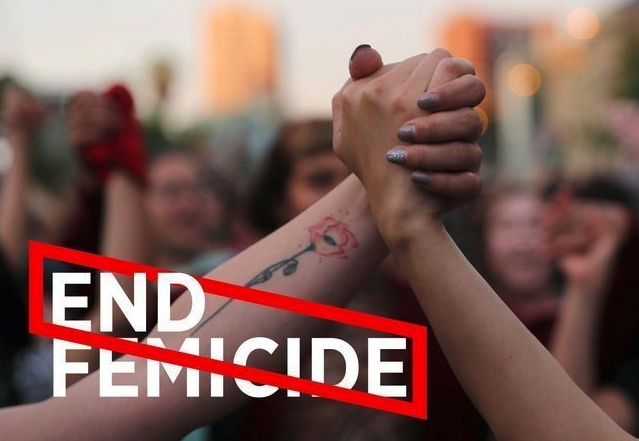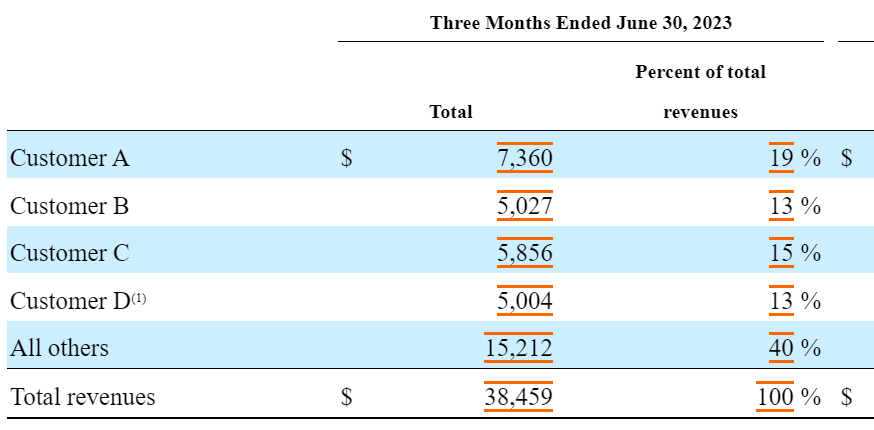Understanding Femicide: A Growing Global Crisis

Table of Contents
Defining Femicide and its Distinguishing Characteristics
What constitutes femicide? Femicide is distinct from other forms of homicide; it's characterized by the gendered motivation behind the killing. It’s not simply a woman being murdered; it's a killing driven by the victim's gender. This crucial distinction highlights the systemic nature of the violence.
- Examples of acts that constitute femicide include: intimate partner violence resulting in death, honor killings, femicide linked to human trafficking, and sexual assault resulting in death. These acts are often preceded by patterns of abuse and control.
- Recognizing the specific context and motivations behind these killings is paramount. A thorough investigation must consider the history of violence, threats, and power dynamics within the relationship or community. Understanding the context helps us to address the root causes of femicide more effectively. The term feminicidio is often used interchangeably and emphasizes the gendered nature of the crime.
The Prevalence and Statistics of Femicide: The global scale of femicide is staggering. Reports from organizations like UN Women and the WHO paint a grim picture. While precise figures are difficult to obtain due to underreporting and inconsistent data collection, available statistics indicate that women are disproportionately victims of homicide compared to men, and a significant portion of these deaths are classified as femicide.
- Regional variations are significant. Certain countries and regions experience alarmingly high rates of femicide, reflecting deeply entrenched cultural norms and systemic failures.
- Underreporting is a major challenge. Many femicides are misclassified as suicides, accidents, or crimes of passion, masking the true extent of the problem. Fear of reprisal, lack of trust in law enforcement, and social stigma prevent many cases from being reported. This lack of accurate data hinders effective intervention.
Root Causes of Femicide: Unpacking the Complexities
Societal Factors Contributing to Femicide: Deep-rooted societal factors fuel femicide. These are not isolated incidents, but rather symptoms of a larger problem.
- Patriarchal norms and gender inequality: Societies where men hold dominant positions and women are subjected to subordination and control are breeding grounds for violence. The belief in male superiority and female inferiority creates an environment where violence against women is tolerated or even normalized.
- Harmful masculinity ideals: The glorification of aggression, dominance, and control over women contributes to a culture that normalizes and even encourages violence. This often includes the belief that men have a right to control women's bodies and behavior.
- Cultural acceptance of violence against women: In some cultures, violence against women is not only tolerated but also condoned or even seen as a way to maintain social order or honor. These harmful beliefs must be challenged and changed.
- Lack of legal protection: Weak legal frameworks and a failure to enforce existing laws provide impunity for perpetrators. This lack of accountability exacerbates the problem.
The Role of Institutional Failures: Ineffective institutions play a significant role in perpetuating femicide.
- Ineffective law enforcement: A lack of training on gender-sensitive investigations often leads to inadequate responses to reports of violence against women. Cases are often dismissed or poorly investigated.
- Judicial systems failing to prosecute perpetrators: Even when cases are reported, the judicial system frequently fails to hold perpetrators accountable. This can be due to corruption, bias, or a lack of understanding of gender-based violence.
- Lack of support services for survivors: Women who experience violence often lack access to vital support services, such as shelters, counseling, and legal aid. This lack of support increases their vulnerability and risk.
- Inadequate protection measures: Protective measures, such as restraining orders, are often ineffective or unavailable, leaving women at significant risk.
Consequences of Femicide: Beyond the Immediate Loss
Impact on Families and Communities: The consequences of femicide extend far beyond the immediate loss of life.
- Families are devastated by the loss of a loved one, facing emotional trauma, social disruption, and economic hardship. The ripple effect on children, siblings, and parents is profound.
- Communities are affected by the loss of a member, creating a climate of fear and insecurity, particularly for women and girls.
The Broader Societal Impact: Femicide has devastating consequences for society as a whole.
- It reinforces gender inequality and perpetuates a culture of fear and violence. It sends a clear message that women's lives are less valued than men's lives.
- It limits women's participation in society and hinders economic development. When women fear violence, their opportunities for education, employment, and social engagement are severely restricted.
Combating Femicide: Strategies for Prevention and Response
Strengthening Legal Frameworks and Enforcement: Effective legal frameworks and enforcement are crucial.
- Implementing and enforcing laws that specifically address femicide is a crucial first step. These laws should provide strong penalties for perpetrators and adequate protection for victims.
- Training law enforcement personnel on gender-sensitive investigations is essential to ensure that cases are investigated properly and perpetrators are held accountable.
- Ensuring access to justice for survivors and families is vital. This includes providing legal aid and support throughout the legal process.
Promoting Gender Equality and Challenging Harmful Norms: Addressing the root causes of femicide requires a multifaceted approach.
- Public awareness campaigns are necessary to raise awareness about femicide and its devastating consequences. These campaigns should challenge harmful stereotypes and promote gender equality.
- Educational programs in schools and communities can help to change attitudes and behaviors that contribute to violence against women. This includes promoting healthy relationships and challenging harmful masculinity ideals.
- Challenging patriarchal norms through media and community engagement is essential to create a culture of respect and equality.
Providing Support Services for Survivors and Families: Comprehensive support services are essential for survivors and their families.
- Shelters provide safe havens for women fleeing violence.
- Counseling offers vital emotional support and helps survivors cope with the trauma they have experienced.
- Legal aid ensures that survivors have access to legal representation and assistance.
- Financial assistance can help survivors to become financially independent and escape abusive situations.
- Access to healthcare, including physical and mental health services, is crucial for survivors' recovery.
Conclusion
Femicide is a grave violation of human rights and a significant obstacle to gender equality. Understanding its root causes, consequences, and the complexities involved is crucial for developing effective prevention and response strategies. The fight against feminicidio demands a comprehensive approach that addresses both the immediate acts of violence and the underlying societal structures that perpetuate them.
We must all work together to combat femicide through education, legislation, and community action. Let's raise awareness, demand justice, and build a world free from violence against women. Learn more about the fight against femicide and how you can contribute to ending this global crisis. Join the movement to end gender-based violence and create a safer world for all women.

Featured Posts
-
 Druzya Rasskazyvayut O Slozhnoy Situatsii S Mikhaelem Shumakherom
May 20, 2025
Druzya Rasskazyvayut O Slozhnoy Situatsii S Mikhaelem Shumakherom
May 20, 2025 -
 Mark Rylances Criticism Of London Music Festivals Impact On Parks
May 20, 2025
Mark Rylances Criticism Of London Music Festivals Impact On Parks
May 20, 2025 -
 Understanding The Lack Of Murder In Agatha Christies Towards Zero Episode 1
May 20, 2025
Understanding The Lack Of Murder In Agatha Christies Towards Zero Episode 1
May 20, 2025 -
 Lou Gala A Deep Dive Into The Decamerons Breakout Star
May 20, 2025
Lou Gala A Deep Dive Into The Decamerons Breakout Star
May 20, 2025 -
 The Great One And The Great Divide Trumps Policies And Gretzkys Legacy
May 20, 2025
The Great One And The Great Divide Trumps Policies And Gretzkys Legacy
May 20, 2025
Latest Posts
-
 Big Bear Ai Bbai Investors Contact Gross Law Firm Before June 10 2025
May 20, 2025
Big Bear Ai Bbai Investors Contact Gross Law Firm Before June 10 2025
May 20, 2025 -
 Understanding The Thursday Decline In D Wave Quantum Qbts Stock Price
May 20, 2025
Understanding The Thursday Decline In D Wave Quantum Qbts Stock Price
May 20, 2025 -
 One Compelling Reason To Invest In Ai Quantum Computing Stocks
May 20, 2025
One Compelling Reason To Invest In Ai Quantum Computing Stocks
May 20, 2025 -
 Investors In Big Bear Ai Holdings Inc Should Contact Gross Law Firm Before June 10 2025
May 20, 2025
Investors In Big Bear Ai Holdings Inc Should Contact Gross Law Firm Before June 10 2025
May 20, 2025 -
 Winter Storm And School Closures What You Need To Know
May 20, 2025
Winter Storm And School Closures What You Need To Know
May 20, 2025
